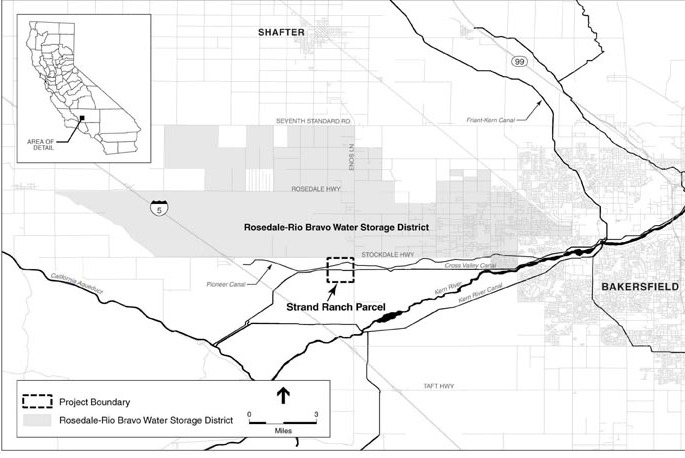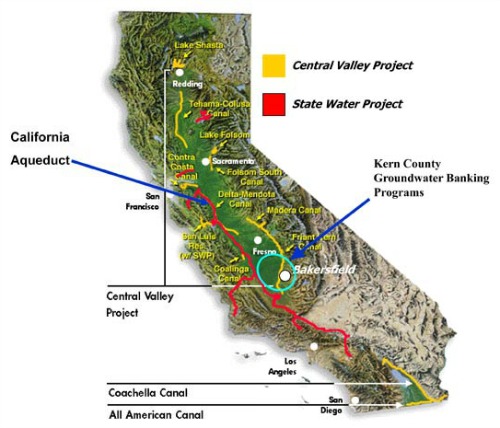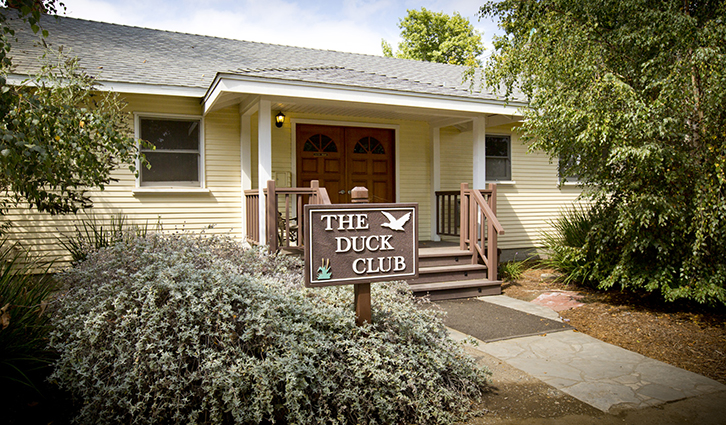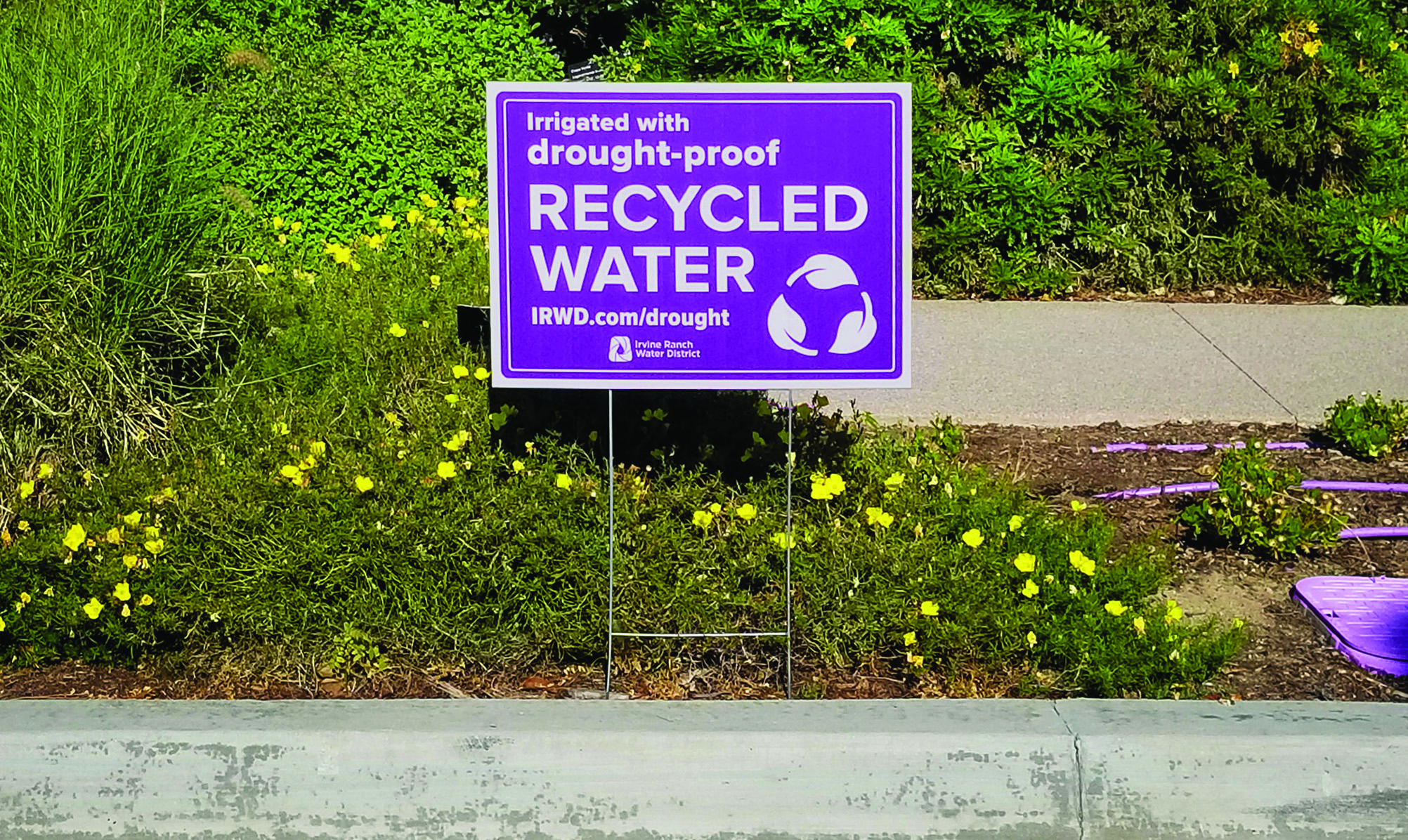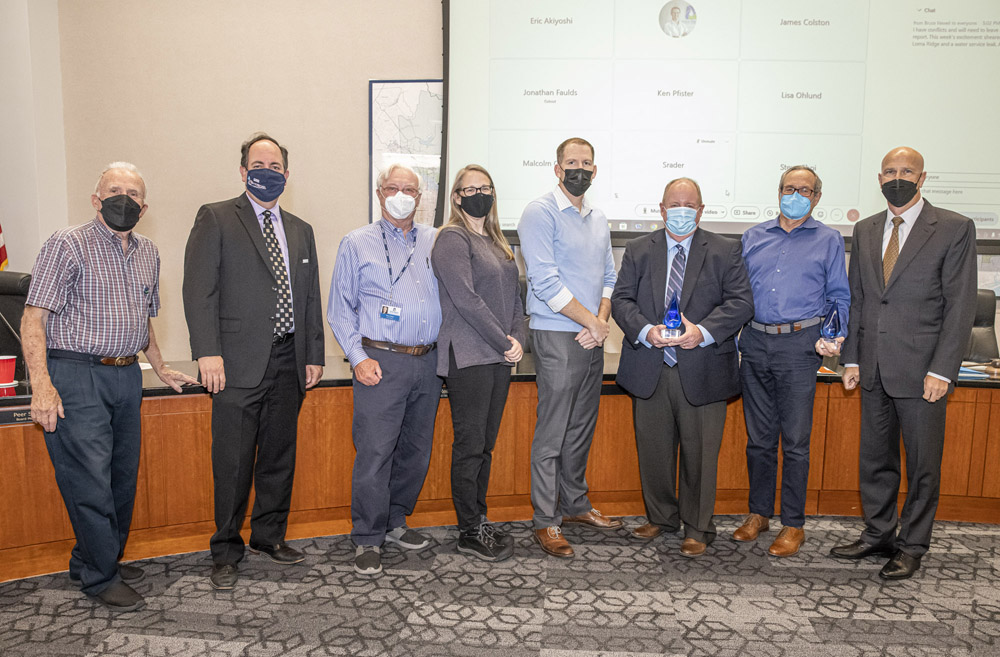Water Banking
The Strand Ranch Integrated Water Banking Project
Ensuring a reliable water supply for our customers is a key focus of IRWD. To accomplish this, the District has created one of the most diverse water supply portfolios in Southern California with investments in groundwater wells, treated groundwater systems, imported water, local runoff capture in Irvine Lake, and in one of the most extensive water recycling systems in the nation. IRWD’s imported water supplies, which are transported from the San Francisco Bay Delta Estuary and the Colorado River, have come under additional environmental and other restrictions that have impaired their reliability.
Water Banking provides an important tool to augment imported water reliability and safeguard IRWD customers from imported water shortages. This is accomplished by capturing low cost water for underground storage during wet periods and recovering this water for later use and importation into the IRWD service area during dry periods or emergencies. The goal of IRWD’s water banking program is to provide enough water to meet approximately 15 percent of IRWD customers' needs during critically dry years. The water bank is an important part of IRWD's commitment to provide the water our customers need during critical shortage conditions while maintaining reasonable rates.

Background and Project Description
|
|
|
Water banking is an important water management tool and opportunities for groundwater banking programs in Southern California are limited. In contrast, Kern County's extensive groundwater basins provide ample opportunities for water storage partnerships.
IRWD has entered into a 30-year water banking partnership with the Rosedale-Rio Bravo Water Storage District in Kern County. Unlike other existing Kern County water banking arrangements, IRWD's partnership with Rosedale provides long-term equity ownership of water banking capacity rather than the typical contract or lease arrangements employed by other agencies.
IRWD has purchased high quality groundwater recharge land that overlies the Kern County regional groundwater basin and is part of the Rosedale Rio Bravo Water Storage District.
|
IRWD partnered with Rosedale and constructed 502 acres of groundwater recharge ponds on this property to allow available surface water to be percolated into the groundwater basin for later use.
As part of the agreement with Rosedale, IRWD can store up to 50,000 acre-feet in the water bank and may recover up to approximately 17,500 acre-feet in any single year. IRWD has priority rights to use the recharge ponds when Rosedale is not recharging Kern River floodwaters and has first priority rights to the use of the recovery facilities. Rosedale has second priority use of the facilities. However, the water that Rosedale stores on its own behalf does not count against the 50,000 of storage dedicated to IRWD. IRWD has contracted with Rosedale to manage the water bank on its behalf.
IRWD has negotiated terms and obtained Board approval for a coordinated operating and exchange agreement with both the Metropolitan Water District of Southern California and the Municipal Water District of Orange County. This agreement will facilitate the recovery and delivery of water from the water bank in Kern County into IRWD’s service area in Orange County.
Water Supply Opportunities
|
IRWD is pursuing various additional sources of water supply for the water bank. Pursuant to IRWD’s contract with Rosedale, Rosedale will divert a portion of its entitlement to floodwater flows in the Kern River to the District-owned storage ponds for recovery in dry years. IRWD is entitled to 20 percent of all Kern River floodwaters recharged with the district’s recharge ponds. In addition, IRWD has entered into pilot program agreements that provide for the storage of water on behalf of both the Central Coast Water Authority and the Buena Vista Water Storage District in return for 50 percent of the water stored being left behind in the Water Bank for the District’s use.
In 2010, IRWD purchased approximately 890 acres of land in Dudley Ridge Water District for the purpose of developing a water supply for its water bank in Kern County. IRWD takes water that is surplus to its Dudley Ridge farming operations and stores it in the water bank. Half of the banked water is returned for use in Dudley Ridge to benefit agricultural operations. This unique water supply arrangement sustains the agricultural operations on IRWD's lands and facilitates partnerships to provide water to other landowners in Dudley Ridge while providing emergency water supplies to IRWD when needed. Through such partnerships, IRWD provides water from its water bank to other Dudley Ridge landowners during drought conditions. This win-win situation is a creative and sustainable approach to meeting the needs of both agricultural and urban communities.
Proposition 1, also known as the Water Quality, Supply and Infrastructure Improvement Act of 2014, dedicated $2.7 billion for investments in new water storage projects in California through the Water Storage Investment Program. In August 2017, IRWD and Rosedale jointly submitted an application to the California Water Commission for the Kern Fan Groundwater Storage Project. The proposed project will develop a regional water bank to store and capture unallocated Article 21 water from the State Water Project during periods when surface water is abundant. The stored water would be extracted when needed to provide ecosystem, emergency supply and water supply benefits.
Water Storage Investment Program
On July 24, 2018, the California Water Commission voted to conditionally award the Kern Fan Project $67.5 million. IRWD and Rosedale are now working to complete additional requirements outlined in the program regulations in order to execute a final funding agreement and receive funds.
Federal Water Infrastructure Improvements for the Nation (WIIN) Act
On October 21, 2019, IRWD and Rosedale submitted a draft feasibility report to the United States Bureau of Reclamation (Reclamation) for review.
After reviewing the project proposal documents, Reclamation sent a letter on February 24, 2020, to IRWD and Rosedale requesting additional information.
In response to the Bureau’s request for additional information, IRWD and Rosedale submitted an updated feasibility report and appendices along with an additional information package on April 13, 2020. The additional information package includes responses to Reclamation’s comments along with supporting attachments.
In June, IRWD and Rosedale participated in a Design, Estimating and Construction (DEC) Review of the Project with Reclamation. The DEC Review included a virtual tour of the Project and an in-depth evaluation of risks and costs associated with the Project. On June 12, 2020, IRWD and Rosedale participated in a briefing on the findings of Reclamation’s DEC Review of the Kern Fan Project. In response to Reclamation’s findings, IRWD and Rosedale submitted the following Addendums and Exhibits to Reclamation on July 1, 2020.
- View the Response to DEC Review Findings
In July, Reclamation released its final Design, Estimating, and Construction Review Report of the Kern Fan Groundwater Storage Project. The DEC Review Report and supplemental information submitted by IRWD and Rosedale serve as the basis for the Joint Resolution Memorandum, which concludes the DEC Review process.
View Kern National Wildlife Refuge Addendum and Updated Tables
-
-
- Supporting Files and Roadmap
Kern Fan Groundwater Storage Project Presentations:
- Presentation to Lower Colorado Basin Regional Basin Regional Director Dr. Terry Fulp June 26, 2020
- Presentation to Bureau of Reclamation Commissioner Brenda Burman August 5, 2020
- Presentation to California-Great Basin Regional Director Ernest Conant August 19, 2020
- Presentation to Bureau of Reclamation Policy Team August 20, 2020.
The ability to deliver water to the Cross Valley Canal, California Aqueduct, or Friant-Kern Canal that meets or exceeds state, federal and local quality standards is an important component in the operation of our water banking program. In 2017 the California State Water Resources Control Board adopted a drinking water regulation that limits TCP concentrations in drinking water to a maximum contaminant level (MCL) of 5 parts per trillion (ppt) or 0.005 micrograms per liter (μg/L).
FAQ
Q. What is TCP?
A. 1,2,3-Trichloropropane (TCP) is a chemical that was an impurity (i.e., an unnecessary, nonactive ingredient) in soil fumigants used to control nematodes from the 1940s to the 1980s. In that era, the fumigants were applied to large areas of farmland across the Central Valley and Kern County. Dow Chemical and Shell Oil were the manufacturers. TCP was never listed on the label, so anyone using the fumigants had no idea TCP was in them. TCP has now migrated into groundwater and has been detected at levels above the new state drinking water standard for TCP in several IRWD water banking wells in Kern County.
Q. What levels have been detected?
A. Historical and recent TCP observations for the 16 wells associated with IRWD’s Banking Project are presented in Table 1.
Q. How is TCP affecting IRWD’s water banking program?
A. TCP contamination in the groundwater is being analyzed to determine impacts to our ability to pump groundwater into the California Aqueduct, because any water entering the Aqueduct must meet drinking water standards, including the new and extremely tight standard for TCP.
Q. Why is this an issue now?
A. The State Water Resources Control Board adopted a “maximum contaminant level” for TCP in drinking water in 2017. As a result, it is now a “constituent of concern”.
Q. What is IRWD doing about TCP?
A. IRWD and our banking partner, Rosedale-Rio Bravo Water Storage District, are working with an engineering firm to evaluate how TCP affects water banking operations and programs. The engineering firm is reviewing alternatives and recommending potential solutions to TCP effects. Strategies being investigated include well replacement, well modification, water treatment and water quality blending. The evaluation is scheduled to be completed in the spring of 2021. We also are engaged in a dispute-resolution process with the manufacturers of the TCP fumigants that caused the problem to ensure they compensate IRWD for any losses and costs as a result of TCP.
Statement on Protecting IRWD’s Emergency Water Supplies January 6, 2022
Groundwater Recharge Research
|
